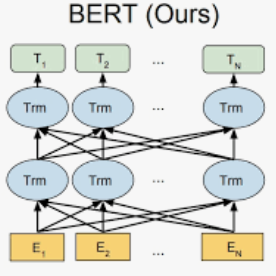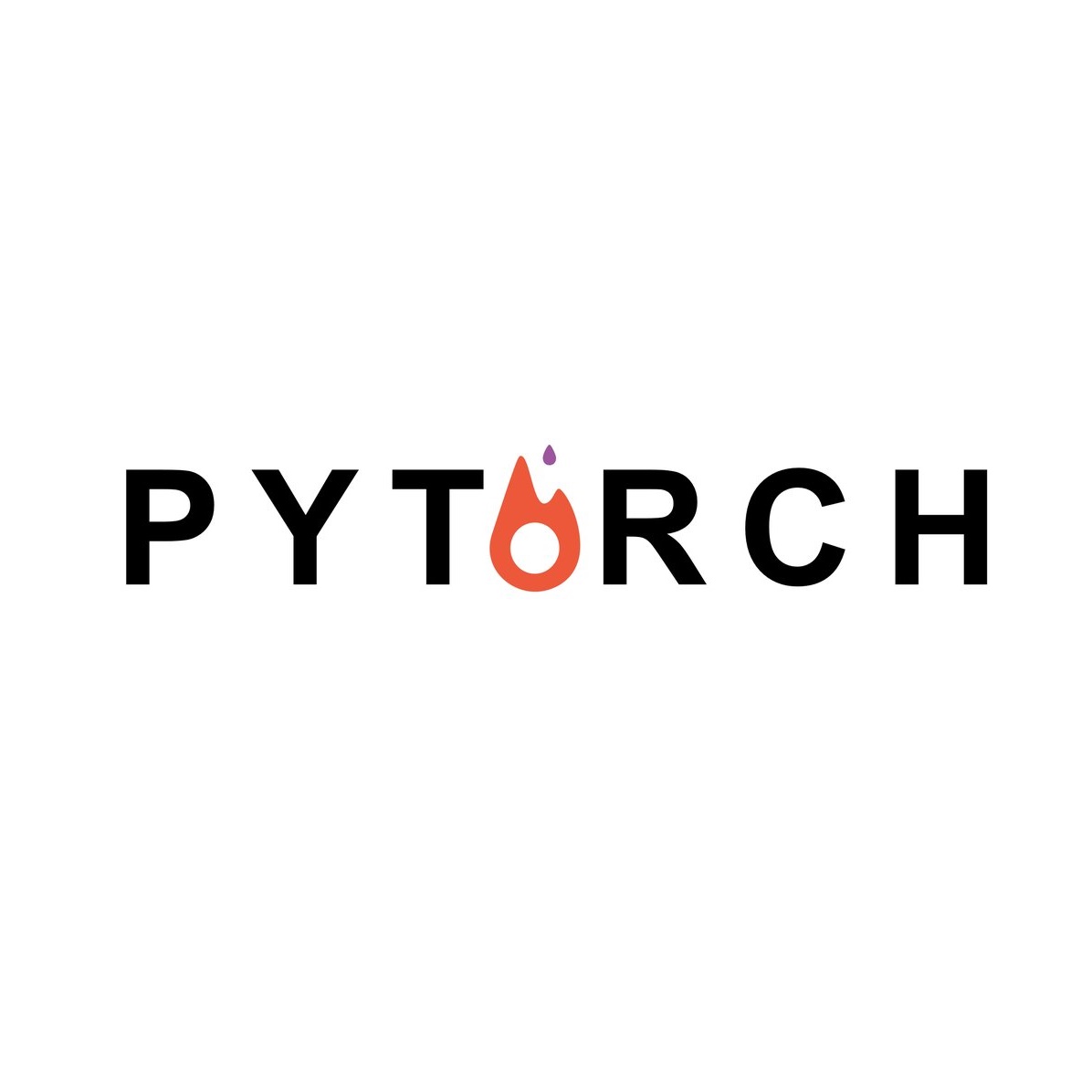pytorch-pretrained-BERT:BERT PyTorch实现,可加载Google BERT预训练模型
Github上刚刚开源了一个Google BERT的PyTorch实现版本,同时包含可加载Google BERT预训练模型的脚本,感兴趣的同学可以关注:
https://github.com/huggingface/pytorch-pretrained-BERT
PyTorch version of Google AI's BERT model with script to load Google's pre-trained models
Introduction
This repository contains an op-for-op PyTorch reimplementation of Google's TensorFlow repository for the BERT modelthat was released together with the paper BERT: Pre-training of Deep Bidirectional Transformers for Language Understanding by Jacob Devlin, Ming-Wei Chang, Kenton Lee and Kristina Toutanova.
This implementation can load any pre-trained TensorFlow checkpoint for BERT (in particular Google's pre-trained models) and a conversion script is provided (see below).
The code to use, in addition, the Multilingual and Chinese models will be added later this week (it's actually just the tokenization code that needs to be updated).
Loading a TensorFlow checkpoint (e.g. Google's pre-trained models)
You can convert any TensorFlow checkpoint for BERT (in particular the pre-trained models released by Google) in a PyTorch save file by using the convert_tf_checkpoint_to_pytorch.py script.
This script takes as input a TensorFlow checkpoint (three files starting with bert_model.ckpt) and the associated configuration file (bert_config.json), and creates a PyTorch model for this configuration, loads the weights from the TensorFlow checkpoint in the PyTorch model and saves the resulting model in a standard PyTorch save file that can be imported using torch.load() (see examples in extract_features.py, run_classifier.py and run_squad.py).
You only need to run this conversion script once to get a PyTorch model. You can then disregard the TensorFlow checkpoint (the three files starting with bert_model.ckpt) but be sure to keep the configuration file (bert_config.json) and the vocabulary file (vocab.txt) as these are needed for the PyTorch model too.
To run this specific conversion script you will need to have TensorFlow and PyTorch installed (pip install tensorflow). The rest of the repository only requires PyTorch.
Here is an example of the conversion process for a pre-trained BERT-Base Uncased model:
export BERT_BASE_DIR=/path/to/bert/uncased_L-12_H-768_A-12 python convert_tf_checkpoint_to_pytorch.py \ --tf_checkpoint_path $BERT_BASE_DIR/bert_model.ckpt \ --bert_config_file $BERT_BASE_DIR/bert_config.json \ --pytorch_dump_path $BERT_BASE_DIR/pytorch_model.bin
You can download Google's pre-trained models for the conversion here.
PyTorch models for BERT
We included three PyTorch models in this repository that you will find in modeling.py:
BertModel- the basic BERT Transformer modelBertForSequenceClassification- the BERT model with a sequence classification head on topBertForQuestionAnswering- the BERT model with a token classification head on top
Here are some details on each class.
1. BertModel
BertModel is the basic BERT Transformer model with a layer of summed token, position and sequence embeddings followed by a series of identical self-attention blocks (12 for BERT-base, 24 for BERT-large).
The inputs and output are identical to the TensorFlow model inputs and outputs.
We detail them here. This model takes as inputs:
input_ids: a torch.LongTensor of shape [batch_size, sequence_length] with the word token indices in the vocabulary (see the tokens preprocessing logic in the scriptsextract_features.py,run_classifier.pyandrun_squad.py), andtoken_type_ids: an optional torch.LongTensor of shape [batch_size, sequence_length] with the token types indices selected in [0, 1]. Type 0 corresponds to asentence Aand type 1 corresponds to asentence Btoken (see BERT paper for more details).attention_mask: an optional torch.LongTensor of shape [batch_size, sequence_length] with indices selected in [0, 1]. It's a mask to be used if the input sequence length is smaller than the max input sequence length in the current batch. It's the mask that we typically use for attention when a batch has varying length sentences.
This model outputs a tuple composed of:
all_encoder_layers: a list of torch.FloatTensor of size [batch_size, sequence_length, hidden_size] which is a list of the full sequences of hidden-states at the end of each attention block (i.e. 12 full sequences for BERT-base, 24 for BERT-large), andpooled_output: a torch.FloatTensor of size [batch_size, hidden_size] which is the output of a classifier pretrained on top of the hidden state associated to the first character of the input (CLF) to train on the Next-Sentence task (see BERT's paper).
An example on how to use this class is given in the extract_features.py script which can be used to extract the hidden states of the model for a given input.
2. BertForSequenceClassification
BertForSequenceClassification is a fine-tuning model that includes BertModel and a sequence-level (sequence or pair of sequences) classifier on top of the BertModel.
The sequence-level classifier is a linear layer that takes as input the last hidden state of the first character in the input sequence (see Figures 3a and 3b in the BERT paper).
An example on how to use this class is given in the run_classifier.py script which can be used to fine-tune a single sequence (or pair of sequence) classifier using BERT, for example for the MRPC task.
3. BertForQuestionAnswering
BertForQuestionAnswering is a fine-tuning model that includes BertModel with a token-level classifiers on top of the full sequence of last hidden states.
The token-level classifier takes as input the full sequence of the last hidden state and compute several (e.g. two) scores for each tokens that can for example respectively be the score that a given token is a start_span and a end_span token (see Figures 3c and 3d in the BERT paper).
An example on how to use this class is given in the run_squad.py script which can be used to fine-tune a token classifier using BERT, for example for the SQuAD task.
Installation, requirements, test
This code was tested on Python 3.5+. The requirements are:
PyTorch (>= 0.4.1)
tqdm
To install the dependencies:
pip install -r ./requirements.txt
A series of tests is included in the tests folder and can be run using pytest (install pytest if needed: pip install pytest).
You can run the tests with the command:
pytest -sv ./tests/
Training on large batches: gradient accumulation, multi-GPU and distributed training
BERT-base and BERT-large are respectively 110M and 340M parameters models and it can be difficult to fine-tune them on a single GPU with the recommended batch size for good performance (in most case a batch size of 32).
To help with fine-tuning these models, we have included three techniques that you can activate in the fine-tuning scripts run_classifier.py and run_squad.py: gradient-accumulation, multi-gpu and distributed training. For more details on how to use these techniques you can read the tips on training large batches in PyTorch that I published earlier this month.
Here is how to use these techniques in our scripts:
Gradient Accumulation: Gradient accumulation can be used by supplying a integer greater than 1 to the
--gradient_accumulation_stepsargument. The batch at each step will be divided by this integer and gradient will be accumulated overgradient_accumulation_stepssteps.Multi-GPU: Multi-GPU is automatically activated when several GPUs are detected and the batches are splitted over the GPUs.
Distributed training: Distributed training can be activated by suppying an integer greater or equal to 0 to the
--local_rankargument. To use Distributed training, you will need to run one training script on each of your machines. This can be done for example by running the following command on each server (see the above blog post for more details):
python -m torch.distributed.launch --nproc_per_node=4 --nnodes=2 --node_rank=$THIS_MACHINE_INDEX --master_addr="192.168.1.1" --master_port=1234 run_classifier.py (--arg1 --arg2 --arg3 and all other arguments of the run_classifier script)
Where $THIS_MACHINE_INDEX is an sequential index assigned to each of your machine (0, 1, 2...) and the machine with rank 0 has an IP adress 192.168.1.1 and an open port 1234.
TPU support and pretraining scripts
TPU are not supported by the current stable release of PyTorch (0.4.1). However, the next version of PyTorch (v1.0) should support training on TPU and is expected to be released soon (see the recent official announcement).
We will add TPU support when this next release is published.
The original TensorFlow code further comprises two scripts for pre-training BERT: create_pretraining_data.py and run_pretraining.py.
Since, pre-training BERT is a particularly expensive operation that basically requires one or several TPUs to be completed in a reasonable amout of time (see details here) we have decided to wait for the inclusion of TPU support in PyTorch to convert these pre-training scripts.
Comparing the PyTorch model and the TensorFlow model predictions
We also include two Jupyter Notebooks that can be used to check that the predictions of the PyTorch model are identical to the predictions of the original TensorFlow model.
The first NoteBook (Comparing TF and PT models.ipynb) extracts the hidden states of a full sequence on each layers of the TensorFlow and the PyTorch models and computes the sandard deviation between them. In the given example, we get a standard deviation of 1.5e-7 to 9e-7 on the various hidden state of the models.
The second NoteBook (Comparing TF and PT models SQuAD predictions.ipynb) compares the loss computed by the TensorFlow and the PyTorch models for identical initialization of the fine-tuning layer of the
BertForQuestionAnsweringand computes the sandard deviation between them. In the given example, we get a standard deviation of 2.5e-7 between the models.
Please follow the instructions given in the notebooks to run and modify them. They can also be nice example on how to use the models in a simpler way than the full fine-tuning scripts we provide.
Fine-tuning with BERT: running the examples
We showcase the same examples as the original implementation: fine-tuning a sequence-level classifier on the MRPC classification corpus and a token-level classifier on the question answering dataset SQuAD.
Before running theses examples you should download the GLUE data by running this script and unpack it to some directory $GLUE_DIR. Please also download the BERT-Base checkpoint, unzip it to some directory $BERT_BASE_DIR, and convert it to its PyTorch version as explained in the previous section.
This example code fine-tunes BERT-Base on the Microsoft Research Paraphrase Corpus (MRPC) corpus and runs in less than 10 minutes on a single K-80.
export GLUE_DIR=/path/to/glue python run_classifier.py \ --task_name MRPC \ --do_train \ --do_eval \ --do_lower_case \ --data_dir $GLUE_DIR/MRPC/ \ --vocab_file $BERT_BASE_DIR/vocab.txt \ --bert_config_file $BERT_BASE_DIR/bert_config.json \ --init_checkpoint $BERT_PYTORCH_DIR/pytorch_model.bin \ --max_seq_length 128 \ --train_batch_size 32 \ --learning_rate 2e-5 \ --num_train_epochs 3.0 \ --output_dir /tmp/mrpc_output/
Our test ran on a few seeds with the original implementation hyper-parameters gave evaluation results between 82 and 87.
The second example fine-tunes BERT-Base on the SQuAD question answering task.
The data for SQuAD can be downloaded with the following links and should be saved in a $SQUAD_DIR directory.
train-v1.1.json
dev-v1.1.json
evaluate-v1.1.py
export SQUAD_DIR=/path/to/SQUAD python run_squad.py \ --vocab_file $BERT_BASE_DIR/vocab.txt \ --bert_config_file $BERT_BASE_DIR/bert_config.json \ --init_checkpoint $BERT_PYTORCH_DIR/pytorch_model.bin \ --do_train \ --train_file $SQUAD_DIR/train-v1.1.json \ --do_predict \ --predict_file $SQUAD_DIR/dev-v1.1.json \ --train_batch_size 12 \ --learning_rate 5e-5 \ --num_train_epochs 2.0 \ --max_seq_length 384 \ --doc_stride 128 \ --output_dir ../debug_squad/




